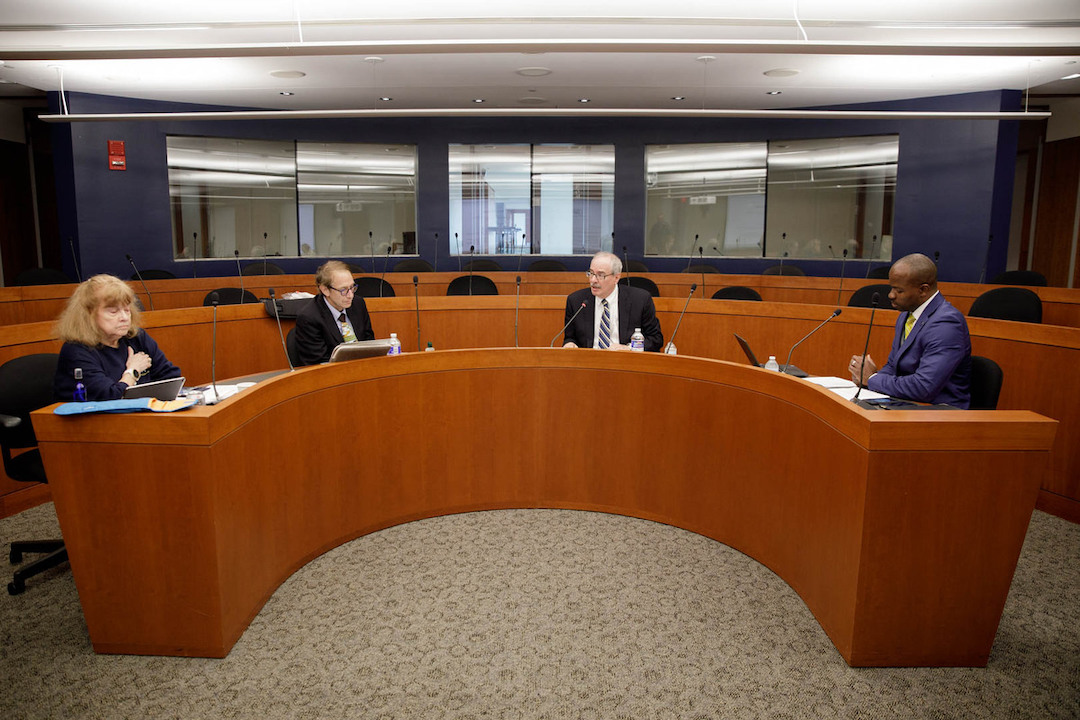George Washington University staff members are working around the clock to monitor the rapidly changing COVID-19 situation and to provide timely updates to the GW community, said Provost M. Brian Blake during a virtual Faculty Senate meeting on Friday.
He said based on the information university officials have, they have encouraged students to go home for spring break to reduce the population of students on campus and to slow the potential spread of the virus. He said the reduction also allows the university to better sustain essential services for students in critical need who remain on campus.
Residential students are expected to not be living in student housing by 5 p.m. on March 20, unless they have been approved to stay, and classroom learning will move online, starting March 23.
In the interim, Dr. Blake said GW Libraries and Academic Innovation Instructional Core for Advocacy, Research and Excellence has designed an action plan to ensure all GW departments can transition their coursework online and will offer training webinars for faculty.
All employees whose jobs can be performed remotely will be required to telecommute beginning March 16.
President Thomas LeBlanc said the health and safety of the GW community is the university’s top priority and that it will continue to work with local, state and federal public health officials to monitor the situation to respond appropriately.
“There continues to be many unknowns at this time, and we are preparing and responding as the situation evolves,” he said. “Updates will continue to be sent to our entire community, and we are also keeping a website up to date with all of our information and resources.”
Strategic plan updates
The president also discussed shared governance as well as faculty concerns regarding the strategic planning process.
“I have heard your concerns about not being consulted about the 20/30 objectives in the strategic plan,” Dr. LeBlanc said. “While I believe these objectives are important, I understand moving forward that the faculty expects to be involved when establishing such goals.”
He said while there are some areas of disagreement, feedback on the strategic plan thus far also reveal many areas of agreement between the administration and faculty including maintaining and enhancing the diversity of the university’s incoming classes of students, increased and targeted aid for GW’s neediest students and maintaining GW’s “historic strengths” by supporting a variety of academic programs at the university.
Going forward, he said the administration will be committed to honoring the process of the administration working collaboratively with faculty, which was outlined in his joint letter with Board of Trustees Chair Grace Speights to faculty.
“I believe that if we work together, we can achieve our shared goals,” Dr. LeBlanc said. “I look forward to working with you on all matters of shared governance.”
In response to questions about how the university would finance the initiatives to be outlined in the strategic plan, Dr. LeBlanc assured the Faculty Senate that the administration would work with faculty to prioritize the objectives and allocate funds to the highest priorities.
To help address concerns, Dr. Blake convened the Future Enrollment Task Force, with representatives from the Faculty Senate, academic leadership and students, to explore detailed options for implementation of the 20/30 objectives.
Dr. Blake said the task force has met six times and is continuing to coordinate with the High-Quality Undergraduate Education Strategic Planning Committee to develop cross-cutting themes that will drive preeminence for GW in the next five to 10 years.
He said the eight themes identified by the task force and the planning committee have been shared with deans, other planning committees and faculty groups, and feedback from these groups will guide the first draft of the strategic plan.
Additionally, Dr. Blake updated the Faculty Senate on the university’s core indicators of academic excellence. He reported:
- Over the past five to 10 years, there has been healthy progress in academic excellence for both faculty and students.
- More students are taking advantage of GW’s comprehensive course offerings with an increased number of joint majors and minors. The areas of study most likely to be interdisciplinary are international affairs, economics, political science and international business and finance.
- The faculty population has gotten more diverse, particularly in terms of gender. He noted that while modest gains have been made in representation of underrepresented minorities in the faculty, the university would continue to work to improve in the area.




